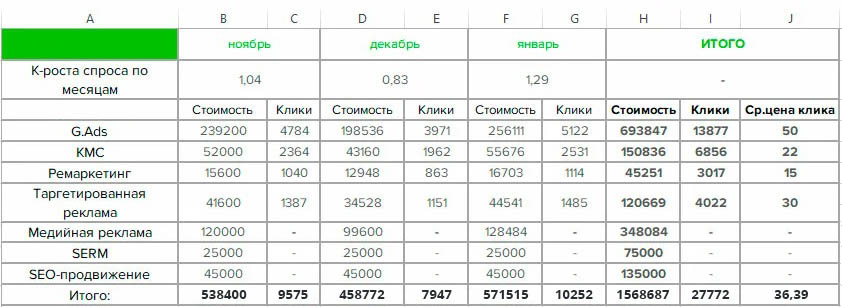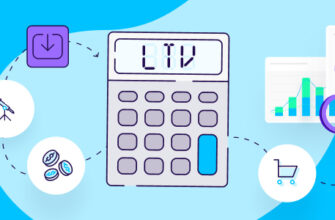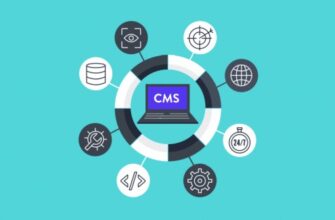- What is a media plan in contextual advertising?
- Why is media planning necessary in contextual advertising?
- What is needed to develop a media plan for an advertising campaign?
- How is a media plan for contextual advertising done?
- Goal setting
- Selection of advertising tools
- Appointment of deadlines and responsible persons
- Budget and transition forecasting
- What is included in the advertising campaign media plan?
- Use a media plan to track the effectiveness of an advertising campaign
When planning an advertising campaign, the customer always wants to predict the approximate costs of its implementation and the return that should be expected from the traffic attracted to the site. To this end, marketers are developing a media plan in contextual advertising, the main purpose of which is to visually show how the budget will be distributed, evaluate the received client traffic, as well as its cost and key campaign performance indicators.
Since any advertising campaign pursues its goals and uses an individual set of tools (for example, a set of creatives, platforms where advertising is broadcast, etc.), before creating a media plan for an advertising campaign, you need to figure out how it is formed.
What is a media plan in contextual advertising?
Advertising campaign media plan is a set of indicators combined into a single table. The indicators are individual for each campaign and depend on the budget, desired goals, business direction and the values of similar indicators from competitors.
How many calls and sales will I get by ordering contextual advertising from you?
I need to calculate the conversion of my website Describe
the task
in the application
Calculate potential ad revenue Google
contextual advertising calculator
The task of the media plan is to effectively draw up a marketing activity strategy and adjust it in a timely manner, based on the intermediate results obtained.
An example of a finished media plan:

A marketer is engaged in the professional formation of a media plan, he studies the niche, potential customers, analyzes data from past campaigns, and also looks for the most effective channels and allocates finances.
Why is media planning necessary in contextual advertising?
Building a media plan is necessary for the client in order to clearly see what the budget was spent on, as well as the result that was achieved. The expert uses the data from the media plan to timely adjust the strategy, if necessary. In general, media planning in contextual advertising helps to solve the following tasks:
- Budget planning. Drawing up a media plan gives the advertiser a clear idea of the cost per click of a potential client and the total budget that will be required to achieve the goal of the advertising campaign. The media plan allows you to plan the costs for the day, week, month and avoid situations of irrational distribution of finances.
- Collecting information about potential customers. One of the parameters tracked in the media plan is coverage, the advertiser can estimate the number of customers who viewed the ad in a particular region.
- Working with semantics. Finding the top keywords and measuring their performance is one of the foundations of a successful campaign.
- Competitor analysis. The final budget of advertising activity depends on the number of clicks and their cost from competitors. Media planning will also help you find the keywords with the lowest CPC to get the most inexpensive traffic to your site in the future.
- Evaluation of return on investment. The AdWords service provides the user with a convenient Keyword Planner tool that allows you to predict the number of impressions, conversions and costs. This data gives a general idea of the income that can be generated by running a marketing campaign.
- Identification of growth points. Using media planning, an internet marketer can identify the potential to drive more effective traffic. For example, if a media plan showed that one of the advertising channels could potentially bring leads at the best price, a significant part of the marketing budget can be allocated to it.
Advice! It is better to start selecting effective key phrases and negative keywords before contextual advertising setup stage. This will significantly save money and time after the start of impressions.
This is not the whole list of reasons why a media plan is drawn up, however, this number is enough for a marketer to understand the full significance of this tool for the formation of an advertising strategy.
What is needed to develop a media plan for an advertising campaign?
After carrying out preliminary work on the search and analysis of semantics and before developing a media plan for an advertising campaign, you need to make sure that the following indicators are analyzed:
- Peculiarities of the target audience. Before setting actual goals and setting the main parameters of the campaign, it is necessary to draw up an approximate portrait of a potential client. Gender, age, profession, geographic location, etc.
- Competitor analysis. It is important to evaluate the path that someone has already taken, this will help to avoid some mistakes and create an effective product.
- Formation of a unique selling proposition. This should be the advantage of the product or service, based on a detailed study of competitors, characteristics of the potential audience and other important factors.
- The results of previous campaigns. When developing a media plan, it is important to focus on previous experience and conduct analytics. For example, if you previously launched a search advertising campaign and targeted advertising on Facebook, and contextual advertising brought in the majority of sales, you need to conduct an analysis before cutting your social media budget. Perhaps most customers come to the site from a search for branded queries – then social networks should not be turned off, they increase the recognition and loyalty of the audience.
- Auditing the RC of competitors. Study examples of their advertising campaigns, what keywords they advertise for, what they write in ad texts. While the campaign is not yet launched, you can learn from the mistakes of other people. You can use special services (Serpstat, SimilarWeb, Popsters and others) to audit competitors’ advertising campaigns.

How is a media plan for contextual advertising done?
The main function of media planning is planning and budget allocation. A good media plan should contain a list of channels through which creatives will be broadcast, the duration of the test for each traffic source, estimated performance indicators and investments in each channel.
Goal setting
After analyzing the potential client audience and the competitive advantages of your product, it is necessary to formulate specific goals for the promotion campaign, for example, these can be:
How many calls and sales will I get by ordering contextual advertising from you?
I need to calculate the conversion of my website Describe
the task
in the application
Calculate potential ad revenue Google
contextual advertising calculator
- Conquering a new target audience;
- Increase in sales figures for customers who have previously made a purchase;
- Updating the image of a brand or new product. Such goals are set by large brands that have already established themselves in the market;
- Increase in profit for a specific period of time;
- Getting leads. As a rule, this is the goal chosen by small and medium-sized businesses.
The next step is to select the sites where the promotion will be carried out.
Selection of advertising tools
During the selection of channels, you need to select exactly those that are more relevant to your business model. For example, advertising in search results brings visitors who are already aimed at a purchase or a targeted action. They know what product they want and are just looking for where to order it.
In the GMS, the opposite is true – users do not search for anything specific, they enter general and informational queries. It makes no sense for them to sell something here and now. Here you can count on the following types of demand:
- Deferred. The user does not intend to buy the product at this moment, but he can evaluate it “for the future”, or was interested in it before;
- Forward. For example, the user entered the query “how to paste the wallpaper yourself”, studied video tutorials on websites, and in a week the user may need a team of builders. In this model, it is important to work ahead of competitors’ offers.
Attention! Search ads cost significantly more because they are more competitive. This is not surprising – advertisers are fighting for a customer who is ready to buy right now.
Appointment of deadlines and responsible persons
An influential indicator is the duration of the advertising campaign. It is significant that the set goals are achieved and investments are returned within a certain period of time. To do this, the advertiser personally enters the deadlines and responsible performers in a special table.
Budget and transition forecasting
Planning the number of conversions and funding can be done in a special Google service “Keyword Planner”. This service allows you to predict the budget of a search campaign based on the cost of impressions in specific regions and selected queries, as well as determine the approximate cost of a click on an ad.
Setting up the service consists in choosing the regions for which the ad will be available, setting the calculation parameters for the specified period and selecting key queries. Additionally, you can specify negative keywords.
The projected cost per application will be determined based on the budget divided by the total number of applications. The total number of applications, in turn, is determined from the conversion multiplied by clicks. Conversion rates can be taken from traffic to leads.
If you multiply the number of leads by the conversion rate, you get the number of sales. The cost per lead is equal to the budget divided by the total number of leads. Based on the resulting attraction price, it is determined how much profit the sale brings. In case of low or no benefit, one of the options should be taken:
- Increase the conversion of the sales team;
- Reduce traffic price;
- Increase website conversion;
- Retarget to other traffic channels.
Drawing up a media plan for an advertising campaign allows you to get the total budget of the campaign, the number of clicks to the site, orders and sales. This takes into account the required rate of return. A pre-built plan makes it easy to track your campaign down the funnel from average CPC to cost per customer. If there are discrepancies with the predicted indicators, then optimization will require much less effort.
What is included in the advertising campaign media plan?
As a rule, the media plan of an advertising campaign consists of the following sections:
- Media brief. This section includes goals that are set for a specialist within a specific campaign. With the help of a media brief, the client can fix his desired prospects, and the advertising specialist can choose the tools and ways to achieve the goals.
- Media strategy. Includes information on the advertising tools used, the timing of the RC. In addition, the media strategy specifies the budget separately for each advertising channel.
- Peculiarities of the target audience. Potential customers are best divided into groups based on demographics as well as interests. Each group can have its own advertising strategy.
- Geographic reference. In different geolocations, the cost per click and conversion will certainly be different. This should be taken into account if the campaign is carried out in different localities.
- Schedule and frequency of impressions. It describes the order and time of connection of each advertising channel, as well as the average number of ads shown per user. If you do not take this indicator into account, you can make a mistake in media planning and assume that an ad can be shown to each user only once.
- Conversions. You need to understand that the target action for each advertising channel will be different. This should be taken into account in the media plan, describing the approximate CR for each case.
Use a media plan to track the effectiveness of an advertising campaign
The media plan can be used not only in the development of an advertising strategy, but also for the subsequent analysis of an advertising campaign. Compare the final figures with the planned ones, if they are lower – analyze what exactly went wrong and make adjustments.
So, if the click-through rate of ads is less than planned – work on ad texts, creatives. The reason for a low conversion could be an incorrectly chosen call to action on the landing page, and not just high prices or the wrong target audience.
Important! In order for advertising to bring results and be effective, you need to compare forecast indicators with real ones and conduct analytics on a regular basis.


















